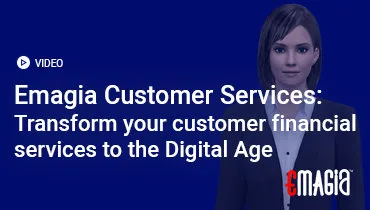In an increasingly digital world, checks might seem like a relic of the past. Yet, for many businesses, particularly in B2B transactions, government payments, or certain traditional industries, checks remain a significant method of receiving funds. While electronic payments offer speed and automation, handling physical checks can be a drain on resources, introducing delays and manual processing burdens. This is where lockbox services step in, offering a seemingly simple solution to streamline incoming paper payments.
A lockbox service promises to accelerate cash flow and reduce administrative overhead by having customers mail payments directly to a specialized post office box managed by a bank. Sounds efficient, right? It often is. However, this convenience comes at a cost, specifically in the form of various charges known as lockbox fees for checks. These fees, while sometimes overlooked in the broader picture of operational costs, can significantly impact a business’s bottom line if not properly understood and managed.
This comprehensive guide aims to shed light on the often-opaque world of lockbox fees for checks. We will delve into what lockbox services entail, how they operate for check processing, the myriad benefits they offer, and most importantly, provide a detailed breakdown of the associated costs. By understanding the factors that influence these fees and exploring strategies for optimization, businesses can make informed decisions, ensuring they maximize the benefits of lockbox services while minimizing the financial outlay.
Understanding Lockbox Services: More Than Just a Mailbox
To appreciate the value and cost of lockbox services, we first need to understand what they are and why businesses utilize them for managing incoming payments.
What is a Lockbox Service? Definition and Purpose
A lockbox service is a banking product that allows a business to outsource the collection and processing of its incoming customer payments, primarily checks. Instead of customers mailing checks directly to the business’s physical address, they send payments to a specific post office box (the “lockbox”) typically managed by the business’s bank. The bank then takes on the responsibility of collecting, opening, processing, and depositing these payments. This service aims to accelerate cash flow, improve cash application efficiency, and enhance payment security.
The Core Function: Streamlining Incoming Check Processing
The primary function of a lockbox service revolves around efficiently handling a high volume of paper checks and their accompanying remittance data. For businesses that receive a significant number of checks, especially from across different geographical regions, a lockbox becomes a crucial operational tool. It turns what would be a labor-intensive internal process into an outsourced, professional operation, directly impacting how efficiently a company manages its incoming check payments.
Why Businesses Utilize Lockboxes: Efficiency, Speed, and Security
Businesses opt for lockbox services for a compelling set of reasons:
- Efficiency: It eliminates the need for internal staff to manually open mail, sort checks, prepare deposits, and handle initial data entry.
- Speed (Reduced Mail Float): Payments are processed and deposited faster, as checks go directly to the bank. This reduces “mail float” (the time a check spends in transit) and “processing float” (the time it takes for the check to be processed internally), making funds available sooner.
- Enhanced Security: It minimizes the risk of internal fraud, theft of checks, or misplacement of payments, as checks are handled in a secure banking environment.
- Improved Accuracy: Automated processing by the bank can reduce human errors in data entry and matching, leading to more accurate cash application.
- Better Audit Trail: Banks provide detailed reports and often images of checks and remittance documents, creating a clear audit trail.
These benefits contribute directly to better overall cash management and a smoother accounts receivable process.
How Lockbox Services Streamline Check Payments: The Operational Flow
To understand the associated charges, it’s helpful to visualize the journey a check takes through a lockbox system.
1. Customer Sends Payment to the Dedicated Lockbox Address
Instead of your company’s street address, your customers are instructed to mail their checks and remittance advices to a designated Post Office Box. This P.O. Box is owned and managed by your bank on your behalf. For businesses with customers across a wide geographic area, having multiple lockbox locations (e.g., East Coast, West Coast) can further reduce mail float.
2. Bank Collects and Opens Mail Multiple Times a Day
Your bank’s lockbox operation typically collects mail from the P.O. Box multiple times throughout the day, ensuring quick retrieval of payments. The mail is then sorted and opened in a highly secure, controlled environment.
3. Processing Checks and Remittance Data
This is where the magic (and the primary charges) happen. Bank personnel or automated systems will:
- Extract Checks: Separate the checks from the remittance advices (the documents explaining what the payment is for, often including invoice numbers).
- Endorse Checks: Electronically endorse the checks for deposit into your business’s bank account.
- Image Documents: Create digital images of the checks and remittance documents.
- Capture Data: Extract key data from the remittance advices (e.g., customer name, amount, invoice numbers, discount taken, deduction reasons). This can range from simple data capture to more complex line-item detail, depending on the service level.
4. Depositing Funds and Transmitting Data
The processed checks are immediately deposited into your business’s designated bank account. Simultaneously, the captured remittance data (and often the images of the checks and documents) is transmitted electronically to your company. This data is usually sent in a structured file format (e.g., BAI2, EDI) for easy integration into your Accounts Receivable (AR) system.
5. Integration with Your Accounts Receivable System
The electronic data file received from the bank is then used to automatically update your AR ledger, matching payments to outstanding invoices. This significantly speeds up the cash application process, improving efficiency and reducing the amount of unapplied cash. Any payments that cannot be automatically matched become exceptions that your AR team can then address using the provided images and data.
The Unseen Expense: A Deep Dive into Lockbox Fees for Checks
The convenience of a lockbox service comes with a clear fee structure. Understanding each component of these charges is crucial for cost management.
Understanding the Cost Structure for Processing Checks
Banks typically charge a combination of fees for lockbox services. These charges are designed to cover the bank’s operational costs for handling, processing, and transmitting payment information. The total amount of lockbox fees for checks a business pays depends on volume, complexity, and the specific service level agreed upon.
1. Per-Item Fees: The Most Common Charge
This is usually the largest component of your lockbox fees for checks. You’ll be charged a fee for each check processed. This fee can vary based on:
- Volume Tiers: Lower fees per check for higher volumes.
- Type of Check: Personal vs. corporate checks might have different rates.
- Remittance Type: Simple vs. complex remittance (e.g., checks with no remittance, checks with simple stub, checks with detailed remittance pages).
For example, a bank might charge $0.15 per check for simple processing, but this can increase significantly for more complex scenarios.
2. Monthly Maintenance and Account Fees
Many banks charge a flat monthly fee for maintaining the lockbox account itself, regardless of transaction volume. This covers the basic administrative overhead of providing the service and can range from a nominal amount to several hundred dollars, depending on the complexity of the setup.
3. Remittance Processing Fees (Data Capture & Transmission)
Beyond simply processing the check, banks charge for extracting and transmitting the remittance data. These fees can be tiered based on the level of detail captured:
- Per Line-Item Charge: If you require the bank to capture individual line-item details from multi-invoice remittances, this will incur a higher per-item fee.
- Data Transmission Fees: Charges for sending the electronic data file (e.g., EDI, BAI2) to your system, sometimes per file or per MB of data.
- Remittance Scanning/Imaging Fees: A charge for creating digital images of the remittance documents.
4. Setup and Implementation Costs
There might be a one-time setup fee for establishing the lockbox account, configuring the processing rules, and setting up the data transmission protocols. This fee covers the initial administrative and technical work required to get the service operational.
5. Image Archiving and Retrieval Fees
Banks typically offer services to archive digital images of processed checks and remittance documents. While viewing recent images might be free, there could be charges for long-term storage or for retrieving specific older images. This can be relevant for audit or dispute resolution purposes.
6. Exception Handling Fees
When a payment doesn’t conform to the standard processing rules (e.g., missing remittance, incorrect amount, check issue), it becomes an “exception” that requires manual intervention. Banks often charge a higher fee for handling these exceptions due to the increased labor involved.
7. Courier and Mail Handling Charges
While often bundled, some providers might itemize charges for special courier services or additional mail handling beyond standard postal collection.
Factors Influencing Your Lockbox Fees for Checks
The total cost of lockbox services isn’t static; several factors can cause your lockbox fees for checks to fluctuate.
1. Transaction Volume: The Economy of Scale
Generally, the higher your monthly volume of checks, the lower the per-item fee you might pay. Banks offer tiered pricing, where higher volumes unlock more favorable rates. Businesses with very low check volumes might find lockbox services disproportionately expensive on a per-transaction basis.
2. Complexity of Remittance Data: The Devil in the Details
The level of detail you require the bank to capture from remittance advices significantly impacts fees. Simple “stub only” processing is cheaper than requiring line-item data capture for multiple invoices, deductions, or discounts. The more the bank has to manually read and key in, the higher the cost will be for handling your check payments.
3. Level of Service and Customization
Do you need custom reporting? Specific handling instructions for certain payers? Integration with a particular ERP system? Highly customized lockbox services with tailored rules or advanced data formatting will naturally incur higher lockbox fees for checks than a standard, off-the-shelf offering. The more bespoke the service, the more expensive it tends to be.
4. Bank Relationship and Overall Business Volume
Your overall banking relationship can play a role. If your business has multiple accounts, significant balances, or uses other fee-generating banking services (e.g., treasury management, credit lines), you might have more leverage to negotiate better rates for your lockbox services. Banks often look at the total value of your business to them.
5. Geographic Location of Lockbox
The physical location of the lockbox can affect mail float and, indirectly, costs. Strategic placement of lockboxes closer to your customer base can reduce transit time, which while not directly a fee, impacts the speed of funds availability.
Benefits of Lockbox Services: Why Businesses Pay the Fees
Despite the various fees, businesses choose lockbox services because the benefits often outweigh the costs, particularly for high volumes of check payments.
1. Accelerated Cash Flow and Reduced Mail Float
By having checks mailed directly to the bank for immediate processing and deposit, businesses significantly reduce the time between when a customer sends a payment and when those funds are available in their account. This acceleration of cash flow is a primary driver for adopting lockbox services.
2. Improved Cash Application Efficiency
Electronic transmission of captured remittance data directly into your Accounts Receivable system automates the matching of payments to invoices. This reduces manual cash application efforts, minimizes unapplied cash, and frees up AR staff to focus on more complex tasks, ultimately improving overall AR efficiency.
3. Enhanced Security and Fraud Prevention
Handling physical checks internally carries inherent risks of theft, fraud, or misplacement. Lockbox services move this process into a secure, controlled banking environment, reducing the risk of internal fraud and protecting sensitive payment information. It adds a crucial layer of security to your incoming check payments.
4. Reduced Administrative Burden for Your Team
Outsourcing mail opening, sorting, and initial data capture eliminates a time-consuming and often mundane administrative task for your internal team. This allows your staff to focus on higher-value activities, leading to greater productivity and potentially reduced labor costs associated with manual payment processing.
5. Better Audit Trail and Reconciliation
Banks provide detailed reports, digital images of checks, and remittance documents, creating a comprehensive audit trail. This simplifies the reconciliation process, making it easier to track individual payments, resolve discrepancies, and prepare for financial audits.
Managing and Optimizing Your Lockbox Fees for Checks
While lockbox fees for checks are a given, there are strategies businesses can employ to manage and potentially reduce these costs while maximizing the benefits of the service.
1. Negotiating with Your Bank or Provider
Don’t be afraid to negotiate, especially if you have a significant banking relationship or high payment volumes. Ask for tiered pricing, reduced per-item fees for higher thresholds, or bundled pricing if you use other treasury management services. Periodically get quotes from other banks to benchmark competitive rates for handling check payments.
2. Transitioning to Electronic Payments
The most effective long-term strategy to reduce lockbox fees for checks is to encourage your customers to adopt electronic payment methods like ACH (Automated Clearing House), wire transfers, or online payment portals. Electronic payments typically have significantly lower per-transaction fees than lockbox services and offer even faster cash availability and richer remittance data. This reduces your reliance on check processing.
3. Streamlining Remittance Data
Work with your customers to encourage them to provide clean, structured remittance data with their checks. The clearer the remittance, the less manual intervention required by the bank, and potentially lower processing fees for your check payments. Providing clear instructions on your invoices can help.
4. Consolidating Lockbox Locations (Carefully)
While multiple lockboxes reduce mail float for geographically dispersed customers, they can also incur separate monthly fees. Evaluate whether the speed benefit justifies the cost of multiple locations versus consolidating to one or two strategic points. Analyze your incoming check volume distribution to make an informed decision.
5. Regularly Reviewing Lockbox Statements and Usage
Just like any other banking service, regularly scrutinize your lockbox statements. Look for any unexpected charges, ensure the per-item fees align with your agreement, and track your exception volume. Understanding your actual usage helps you identify areas for optimization or re-negotiation of your lockbox fees for checks.
Emagia: Modernizing Receivables Beyond the Lockbox
In the evolving landscape of payment processing, while traditional lockbox services still play a vital role for businesses receiving physical checks, the true revolution lies in end-to-end Accounts Receivable (AR) automation. While Emagia does not directly provide lockbox services, our AI-powered Order-to-Cash (O2C) platform significantly enhances the value extracted from lockbox data and ultimately reduces your reliance on traditional check processing, thereby optimizing your overall costs, including lockbox fees for checks.
Emagia’s intelligent automation engine seamlessly integrates with your bank’s lockbox feeds. Instead of your team manually sifting through lockbox files and images, our platform automatically ingests, extracts, and validates remittance data from all sources – including your lockbox provider. This means that even with physical checks, the data capture and cash application process is significantly accelerated and made more accurate. Our AI-driven algorithms can automatically match payments to invoices, even with complex or partial remittance information, reducing manual intervention and minimizing unapplied cash that often results from messy lockbox data. By automating the cash application downstream from the lockbox, Emagia ensures quicker cash reconciliation and a more precise understanding of your cash position. This operational efficiency translates to less time spent by your team on mundane tasks, indirectly leading to cost savings that can offset or justify your lockbox fees for checks.
Furthermore, Emagia empowers businesses to strategically reduce their dependency on check payments altogether. Our platform offers robust Electronic Bill Presentment and Payment (EBPP) capabilities, encouraging your customers to transition to digital payment methods. As more customers pay electronically, your volume of physical checks decreases, directly leading to a reduction in your variable lockbox fees for checks. By providing a superior digital payment experience, Emagia helps you optimize your entire payment acceptance strategy, ensuring you get paid faster, more securely, and at a lower overall cost, transforming your receivables process from a manual burden into an automated, highly efficient profit center.
Frequently Asked Questions (FAQs) About Lockbox Fees for Checks
What is a lockbox service for checks, and why do businesses use it?
A lockbox service for checks is a banking solution where your customers mail their payments directly to a specialized Post Office Box managed by your bank. The bank then collects, opens, processes, and deposits the checks into your account. Businesses use it to accelerate cash flow, improve cash application efficiency, enhance payment security by reducing internal handling, and minimize administrative burdens associated with manual check processing.
Why do banks charge lockbox fees for checks?
Banks charge lockbox fees for checks to cover the operational costs associated with providing the service. These costs include collecting mail from the P.O. Box, physically opening envelopes, extracting and sorting checks and remittance documents, endorsing checks, imaging documents, capturing remittance data, depositing funds, and electronically transmitting data files to the business. These fees compensate the bank for the labor, technology, and security involved in handling paper payments.
What are the main types of lockbox fees for checks I might encounter?
The main types of lockbox fees for checks you might encounter include: (1) Per-item fees for each check processed (often tiered by volume); (2) Monthly maintenance fees for the lockbox account; (3) Remittance processing fees for data capture and transmission (can be per-line item or per file); (4) Setup and implementation costs; (5) Image archiving and retrieval fees; and (6) Exception handling fees for payments that require manual intervention due to missing or unclear data.
Can lockbox services help reduce unapplied cash in my Accounts Receivable?
Yes, lockbox services can significantly help reduce unapplied cash in your Accounts Receivable. By automating the capture and electronic transmission of remittance data along with check images, the lockbox provides structured information that your AR system can use to automatically match payments to invoices. This greatly reduces manual data entry errors and the likelihood of payments sitting unapplied due to missing or unclear remittance details.
Are lockbox fees for checks negotiable with my bank?
Yes, lockbox fees for checks are often negotiable, especially if your business has a high volume of check payments or a significant overall banking relationship. You can negotiate for tiered pricing, lower per-item fees for higher transaction thresholds, or discuss bundled pricing if you utilize other treasury management services. It’s always a good practice to benchmark rates from different banks to ensure you’re getting competitive pricing.
How do electronic payments compare to checks processed via lockbox in terms of cost and efficiency?
Electronic payments (like ACH or wire transfers) generally offer significant advantages over checks processed via lockbox in terms of both cost and efficiency. Electronic payments typically incur much lower per-transaction fees than lockbox services. They also provide faster funds availability (often same-day or next-day), reduce the risk of fraud associated with physical checks, and often come with richer, more structured remittance data, leading to higher automation rates in cash application and reconciliation.
What kind of businesses benefit most from using lockbox services?
Businesses that benefit most from using lockbox services are those that receive a high volume of physical check payments, particularly from a geographically dispersed customer base. This includes large corporations, government entities, non-profit organizations, utilities, and businesses with traditional B2B payment models. For such businesses, the efficiency, speed, and security provided by lockbox services often outweigh the associated lockbox fees for checks.
Conclusion: Balancing Convenience and Cost in Check Processing
In conclusion, while the financial world rapidly pivots towards digital payment methods, lockbox services for checks continue to offer a vital solution for businesses that still receive a substantial volume of paper payments. This convenience, however, is not without its costs, manifesting in various lockbox fees for checks that require careful attention and strategic management.
We’ve dissected the operational flow of lockbox services, from the initial mail collection to data transmission, highlighting how each step contributes to the overall fee structure. Understanding the per-item charges, monthly maintenance fees, and specific remittance processing costs empowers businesses to accurately assess their total outlay. Crucially, factors like transaction volume, data complexity, and the depth of your banking relationship all play a role in shaping your final charges for handling check payments.
Ultimately, the decision to use (or optimize) lockbox services involves balancing the clear benefits of accelerated cash flow, enhanced security, and reduced administrative burden against the associated fees. By actively negotiating with banks, strategically encouraging electronic payments, and leveraging automation tools for downstream processing, businesses can ensure they extract maximum value from their lockbox service while keeping their lockbox fees for checks in check, driving overall financial efficiency.



